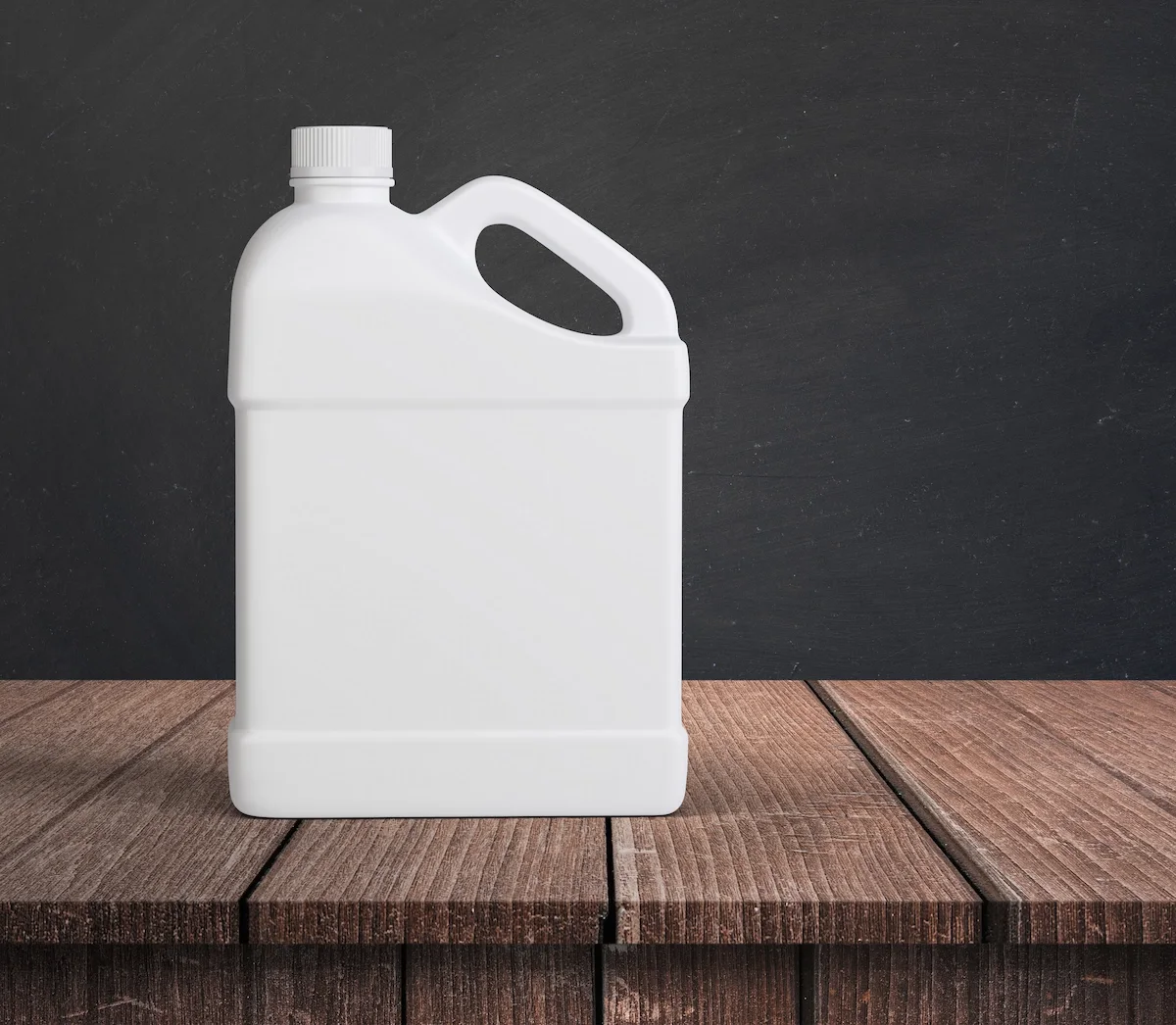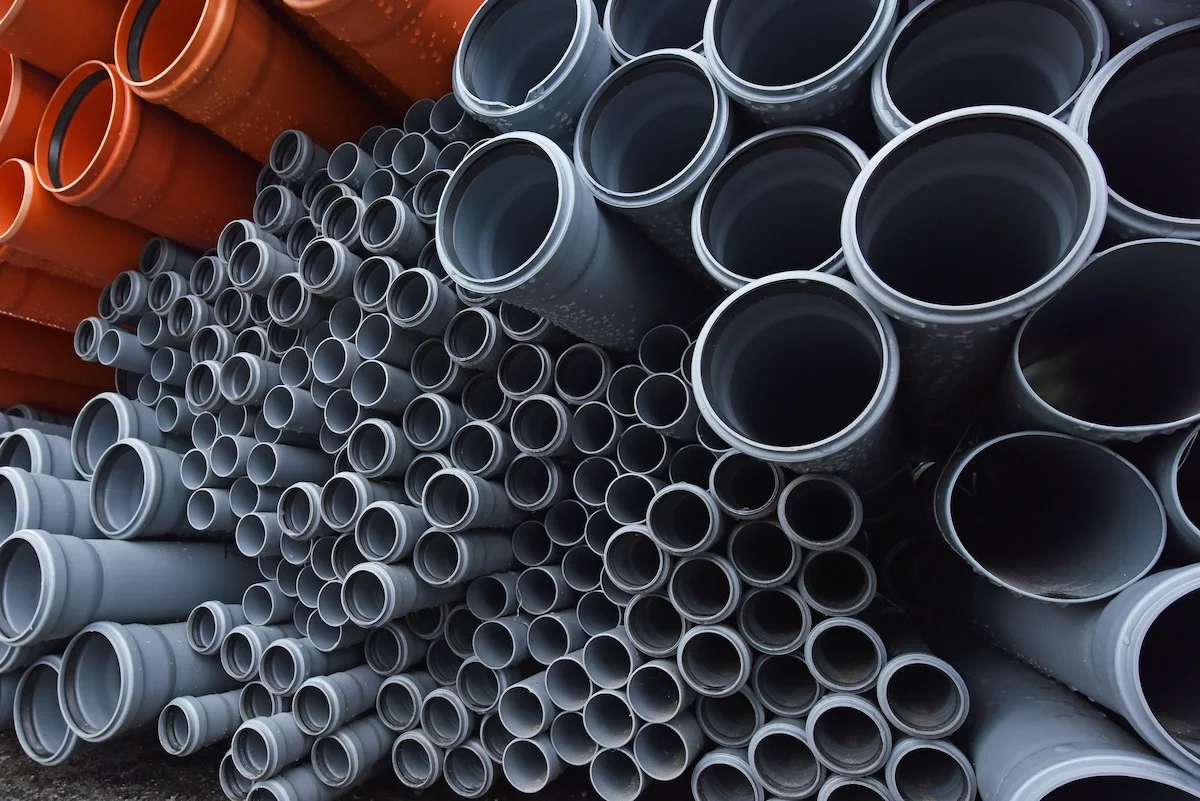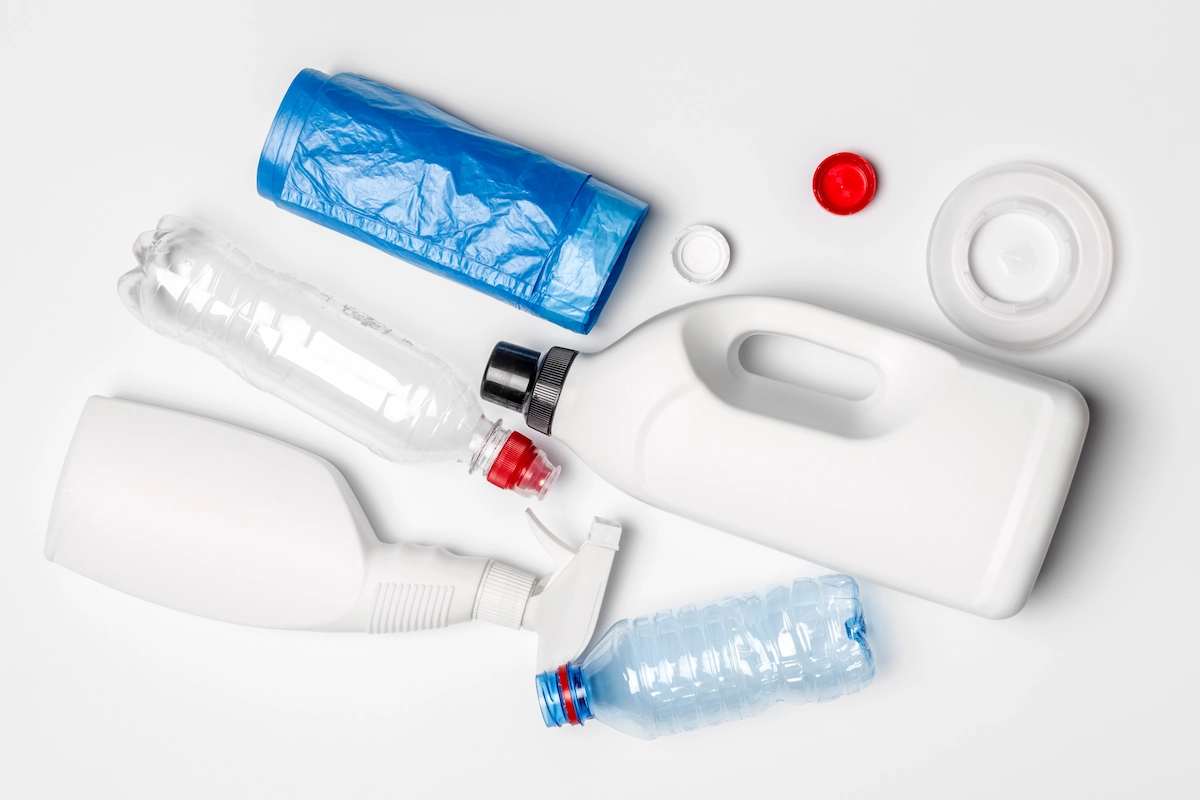
26-10-2025
What Is High-Density Polyethylene (HDPE) Plastic & Its Uses
Polyethylene is a type of plastic commonly found around us, such as in food containers and shopping bags. Polyethylene is categorized into several groups based on its density, with HDPE plastic as the highest one.
HDPE is a durable and recyclable plastic. To learn more about HDPE plastics, read this article until the end!
What Is HDPE (High-Density Polyethylene)?

HDPE plastic is a thermoplastic polymer made from crude oil. Since it is a thermoplastic, HDPE is easily moldable and recyclable. It is one of the most commonly used plastics in the market, particularly for food containers, cleaning product packages, and pipes.
HDPE is also famous for being durable because it is chemical reaction, impact, scratch, and moisture resistant. Its properties are lightweight, water-resistant, heat-resistant up to 120 degrees Celsius, and safe for direct contact with food and beverages. Moreover, HDPE is also weather and sun-resistant, making it suitable for water pipe manufacturing.
One of the characteristics differentiating HDPE plastic from other polyethylenes, like LDPE, is its crystalline property. It makes HDPE more resilient, solid, and opaque. You will easily recognize this plastic since it has a plastic code number 2 inside a circular triangle.
Read also: What Is Plastic Made of? Here Are the Materials & Process
How Is HDPE Plastic Made?
HDPE plastic is made from petroleum and has linear polymer chains of 4–10 short chains. The manufacturing process is quite long, beginning with petroleum extraction and ending as a consumer product. Here is the making process you can learn:
- Petroleum hydrocarbon is heated to break the chain into several monomers called ethylene.
- Those monomers are collected and mixed with a metal catalyst, such as titanium tetrachloride, along with the catalytic compounds. The final product will be thick polyethylene.
- Some remaining catalyst is cleaned from the thick polyethylene. Then, it is extracted, filtered, and dried into HDPE.
- The HDPE undergoes further processing as feedstocks or specific products.
Advantages of HDPE Plastic

HDPE plastic has several advantages that make it widely used in the industry, such as:
1. Moldable and Meltable
HDPE is a type of plastic that is easy to melt and mold because it has a high melting point. It may remain solid even when heated to high temperatures. However, once it reaches its melting point, it melts quickly and is ready to be molded into a wide variety of products.
2. High-Density Ratio and Durability
HDPE is distinct from other polyethylenes because of its high density ratio. It has a density of 0.93–0.97, which makes it more durable than LDPE.
3. Resistant to Corrosion
HDPE is resistant to corrosion, decay, and mold, allowing it to work optimally in high-moisture areas as a water pipe. It is also durable and weather-resistant. In addition, it is resistant to most common chemicals, solvents, acids, soaps, and cleaning agents.
4. Recyclable
Although rigid and highly dense, HDPE is still easy to recycle, making it a more environmentally friendly choice. Because it is easy to recycle and highly durable, you can reduce the amount of HDPE waste that accumulates in landfills.
The most common way to recycle HDPE plastic is to shred it into small pieces, then melt it down to make new products, such as plastic tables.
5. Weldable
HDPE plastic can be welded with other HDPE material using the heat welding method. It eases the construction processes, such as welding water pipes or tanks.
Read also: Polypropylene (PP): Definition, Types, and Characteristics
Uses of HDPE Plastic
The uses of HDPE plastic are wide, from construction to the food industry. Here are some HDPE uses you can learn:
1. Construction and Infrastructure Industry
HDPE is commonly used to produce water pipes and culvert pipes due to its flexibility, durability, and resistance to chemicals and pressure. Additionally, HDPE is corrosion-resistant, making it reliable for the industry.
2. Logistic Industry
Due to its durability, HDPE is also used to produce drums and containers for storing chemicals, lubricants, and oils. This material is also corrosion-resistant and leak-proof, ensuring that liquids remain safe during distribution.
3. Packaging Industry
HDPE is often used as packaging for many products, from household items to cosmetics and other products. That’s why you may find beauty product containers or cleaner bottles made from HDPE.
4. Automotive Industry
Some vehicle components, such as cable protectors and coolant containers, are generally made of HDPE. In addition to their durability, components made of HDPE also help reduce vehicle weight.
5. Food and Beverage Industry
Not only is it safe for storing chemicals, but HDPE is also safe for packaging food and beverages because it does not react easily and is recyclable. Examples of HDPE plastics for this industry are food containers, milk bottles, and water gallons.
The Differences Between HDPE and LDPE

High-Density Polyethylene (HDPE) and Low-Density Polyethylene (LDPE) come from the same monomer. Yet, both have different functions and properties.
LDPE is more flexible because it has lower crystallinity than HDPE. Some examples of LDPE are shopping bags and trash bags. On the other hand, HDPE has a more linear chain structure that makes it more rigid, compact, and stronger than LDPE.
Furthermore, since LDPE has a low crystallinity, it is more transparent than HDPE. Then, LDPE is sensitive to heat and can melt even at 20 degrees Celsius. In contrast, HDPE remains functional even at 100 degrees Celsius.
Moreover, HDPE has better chemical and impact resistance than LDPE. Although they have different uses and characteristics, both can be recycled. However, they cannot be recycled together because LDPE melts very easily and can clog recycling machines.
That concludes the information you can learn about HDPE plastic. HDPE is a strong plastic and reliable for many industries.
Regarding HDPE, Chandra Asri Group, a leading chemical, infrastructure, and energy company in Southeast Asia, offers polyolefins, including polyethylene (also HDPE) under the Asrene® brand and polypropylene under the Trilene® brand.
Our polyethylene is Halal certified by Majelis Ulama Indonesia (MUI), making it safer for food and beverage package manufacture.
Our HDPE business line also extends to Singapore. In 2025, Chandra Asri Group and Glencore officially acquired Shell Energy and Chemicals Park (SECP) in Singapore by purchasing shares in Shell Singapore Pte. Ltd.'s subsidiary, Aster Chemicals and Energy Pte. Ltd. (Aster).
Aster has a refinery with a crude oil processing capacity of 237,000 barrels per day, an ethylene cracker with a capacity of 1.1 million metric tons per year, and other downstream chemical assets.
Aster's products and services include energy solutions, engineering, fuels, petrochemicals, and sustainable products. For petrochemical products, Aster also provides HDPE and other raw materials for industry.
Fulfill your chemical feedstock needs with Chandra Asri Group!
Read also: What Is Polymerization? Types, Mechanism, and Examples